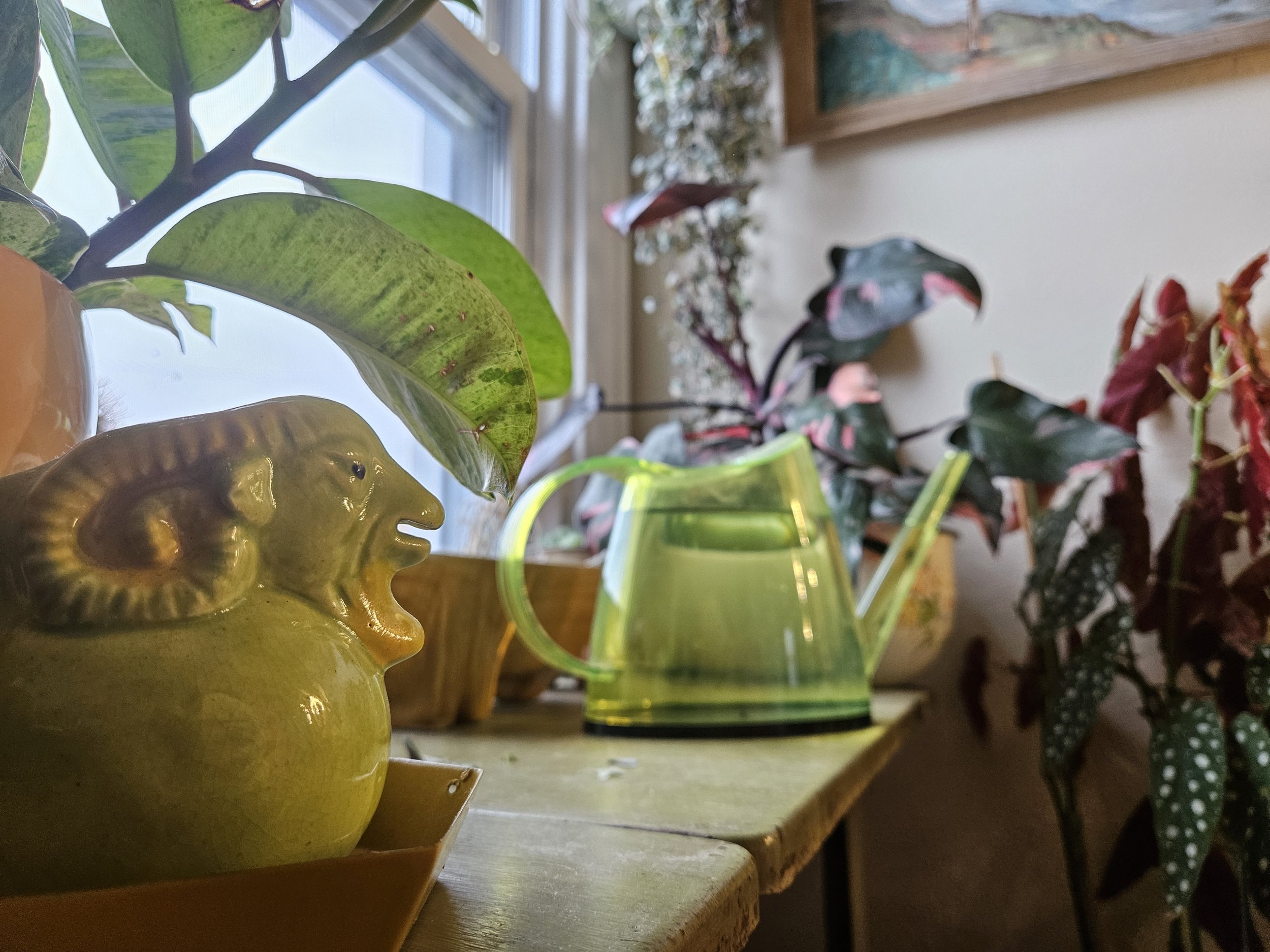
Water or not to water is indeed the dreaded question - from water quality to when to water, learning your plants water needs takes time and attention.
When it comes to water, I have found that many plants have ways, both subtle and dramatic, to “communicate” their needs. When I say “communicate”, I don’t mean my plants are talking to me, although that does not mean I don’t talk to them (don’t judge - try it!). Plants have several visual signs you can look for to know it might be time to water, like dull, drooping or wilted leaves. This is one of the reasons observing your plants is important. It’s much easier to notice these signs when you spend even 30 seconds per day checking on your plant.
droopy or wilted leaves
If the leaves of your plant seem droopy and they easily bend, this is a good sign your plant might be a little thirsty. Sometimes the leaves will curl or shrink, which makes them look pretty sad. After your plant has been fully watered, you’ll notice the leaves become rigid and perky, which makes them look happy!
soil check
If the leaves aren’t very helpful in determining if your plant needs water, check the soil. If the soil is still holding moisture, it’s unlikely your plant needs water. If the soil looks or feels dry (stick your finger in the dirt up to the first knuckle), you might need to water. For good measure, I’ll lift the plant up to check how heavy it is. If the plant is lighter than usual, it’s time to water that baby!
the water wheel
Tap water from our homes sometimes has chemicals in it that our plants don’t love. Some plants, like orchids and carnivorous plants don’t do well with tap water at all and instead demand distilled water. Once I’ve used an entire gallon of distilled water I refill it with tap water and let it sit out without any cap or lid so the chemicals evaporate.


